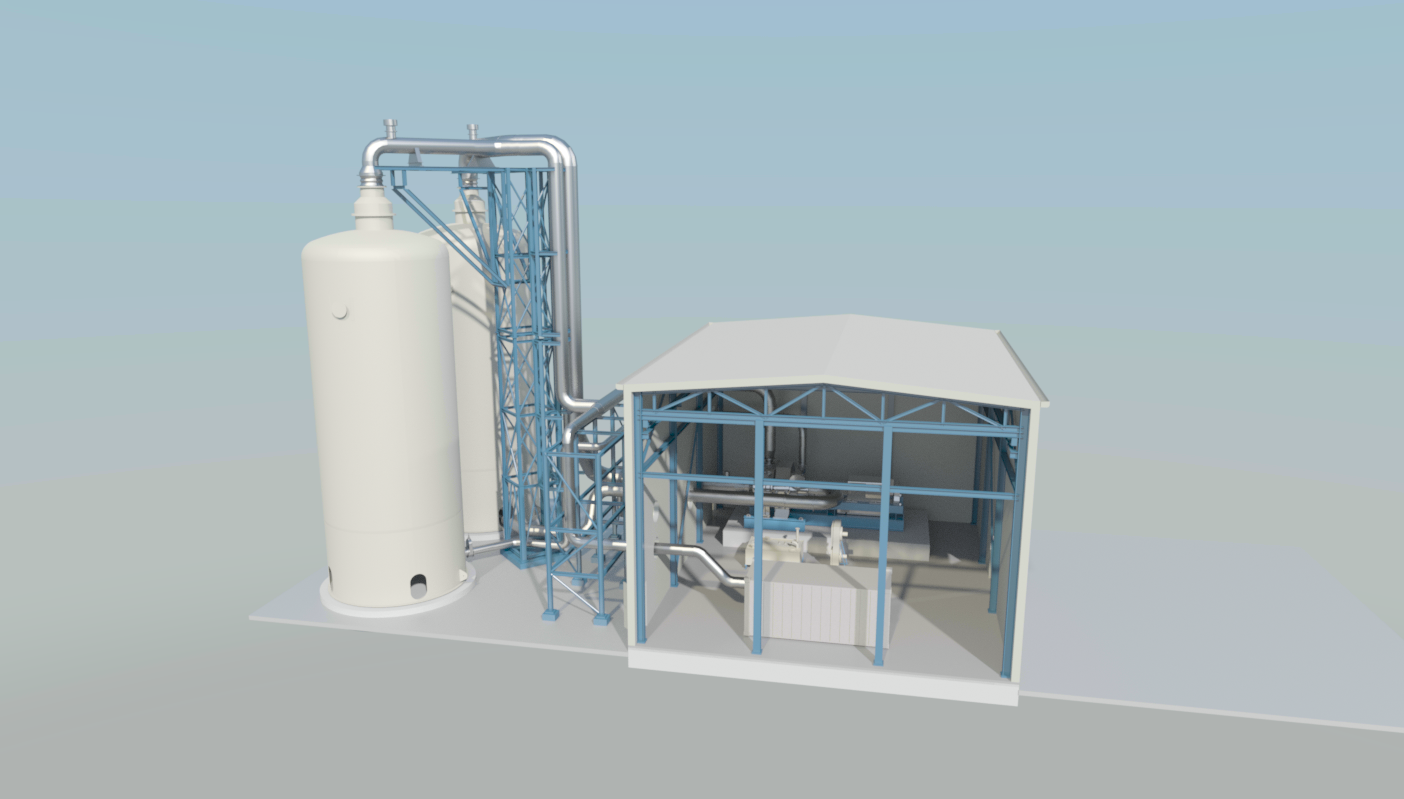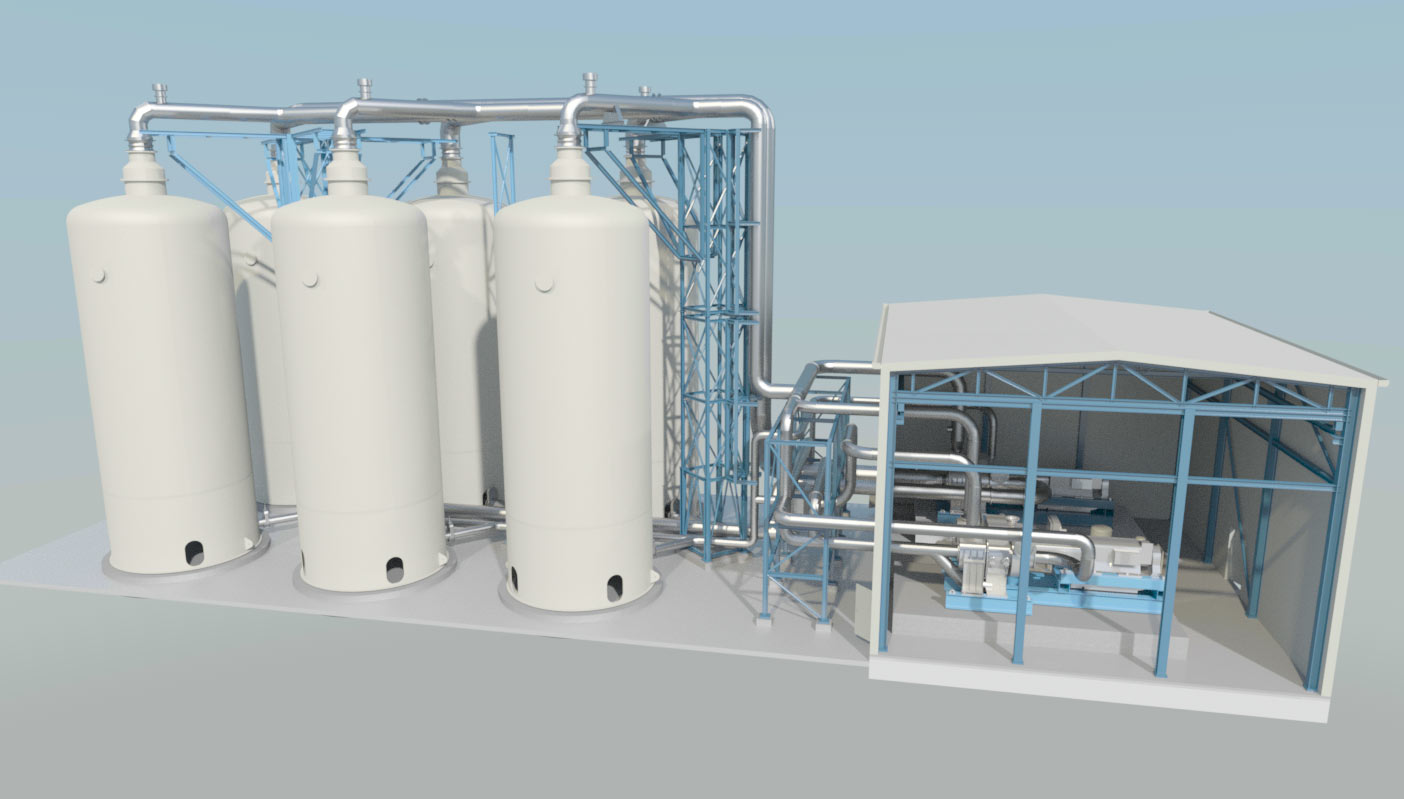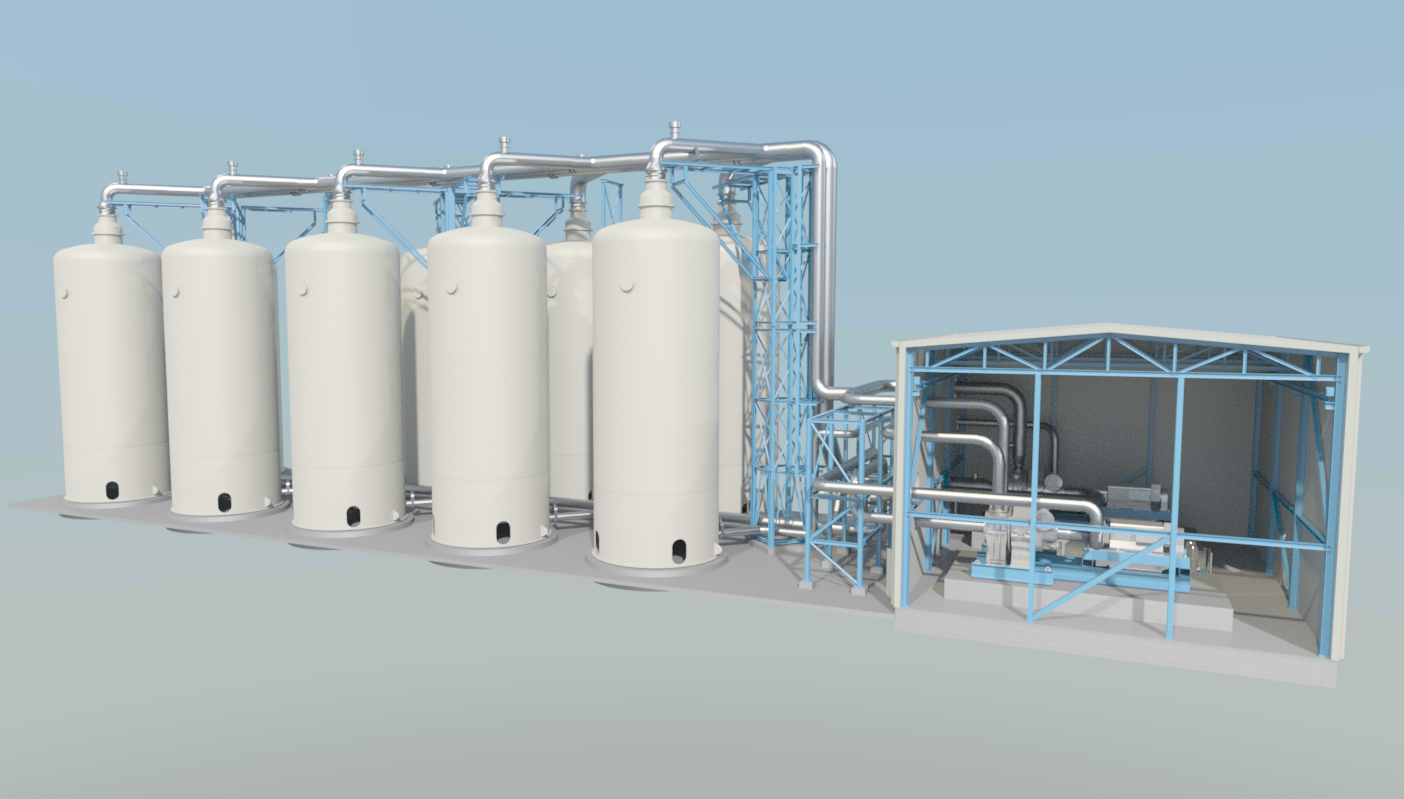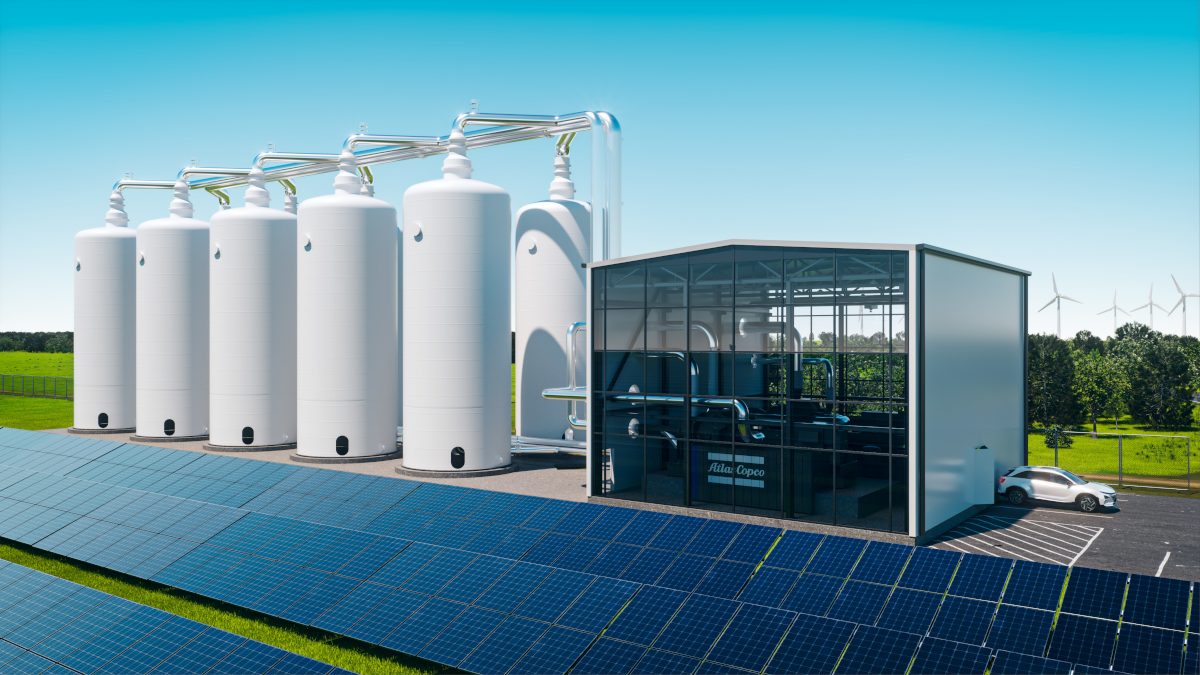
GridScale offers electrical energy storage of mid-term duration ranging from hours to weeks
The GridScale storage system is an industrialized and scalable technology for cost-effective thermal storage of electric energy. GridScale uses crushed rock as a low cost storage medium and offers high round-trip efficiency with no geological or topological constraints.
How GridScale works
GridScale is a pumped heat energy storage system, using crushed rock as an abundant, low-cost storage medium.
The system’s main components:
- A turboexpander unit with pre-pressure compressor, controls etc.
- A filter unit with air filters and manifolds.
- Two rows of standardized storage reservoirs.
The storage duration is adjusted with the number of storage tanks. Power rating is adjusted with the number of parallel units.
The GridScale range covers both the 12-18 h duration required for day-to-day smoothing of solar PV, and the 3 to 7 days duration required for smoothing of wind power over gaps caused by low wind periods.
GridScale has several unique benefits:
- No geological or topological constraints. Can be implemented as stand-alone units globally, easily serviced by conventional truck technicians.
- Uses no scarce materials.
- Poses no explosion hazards.
- High round-trip efficiency due to application of heat pump principle in charging cycle
- Facilitates the integration of much larger shares of renewables than previously possible.
- Delivers game-changing cost reductions of electric energy storage.
The hot storage reservoir material is crushed basalt rock. Basalt is formed by the cooling of lava, and due to its volcanic origin, it is very resistant to rapid heating and cooling. Basalt is abundant and easily accessible, and it is readily available in large volumes all over the world.
The total specific cost of the thermal storage materials, including storage tanks, insulation, etc. is expected to be less than 10 EUR per kWh electric discharge capacity for serial production systems. In comparison, conventional battery storage systems typically have storage capacity costs in the range of 200 EUR per kWh.
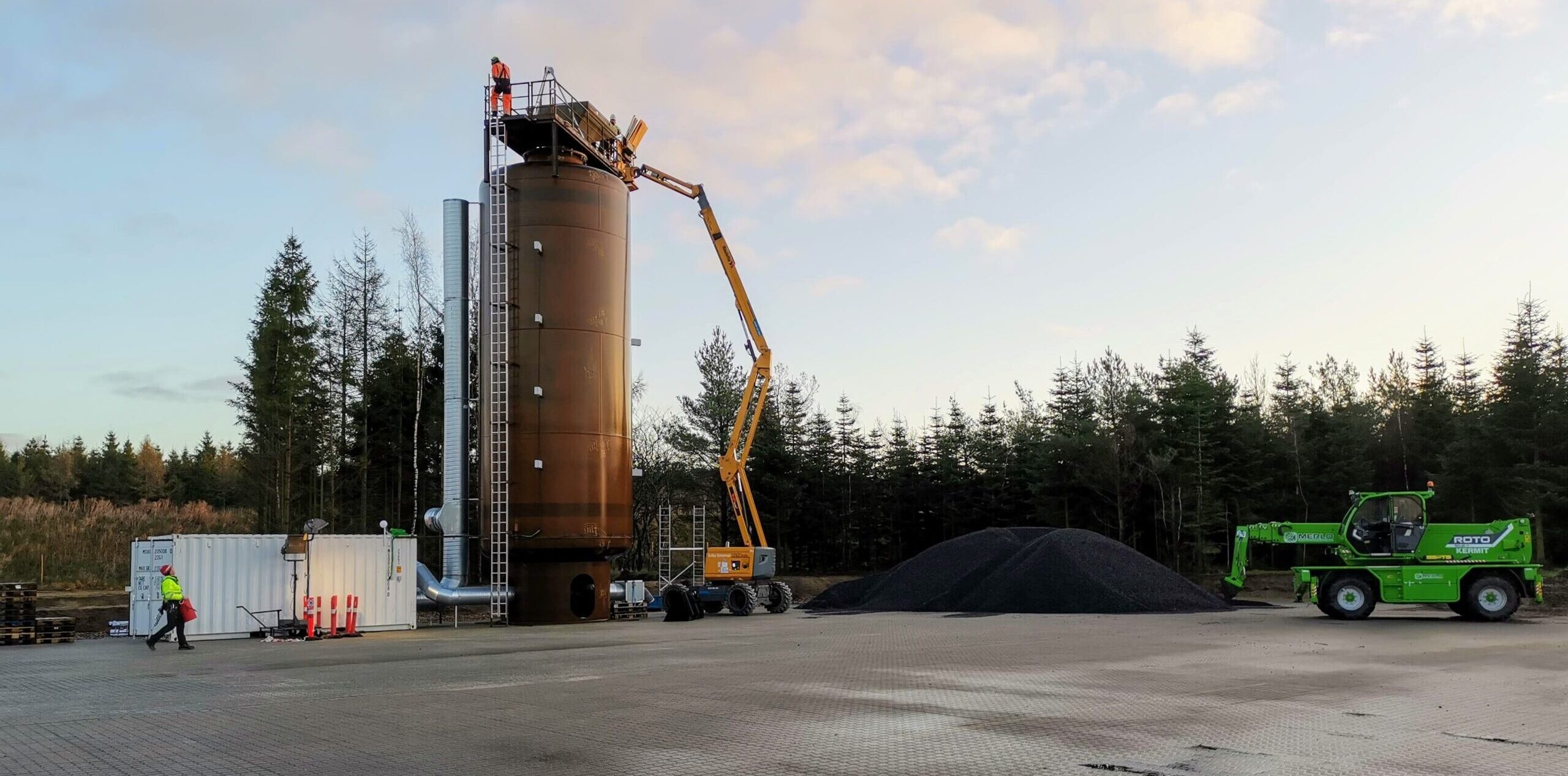
The GridScale system’s charging and discharging cycle
The GridScale system’s charging and discharging cycles are implemented as a heat pump, and two separate reservoirs store heat and cold, respectively.
Since the maximum temperatures of the cold storage reservoir are much lower than in the hot storage reservoir, the cold reservoir can use any type of crushed rock. There is no degradation of the crushed rock storage materials, and the GridScale nameplate storage capacity is available for the full lifetime of the system.
The charge-discharge system comprises one compressor-turbine system for charging and another similar but differently dimensioned system for discharging.
The charging system is operated in a heat pump cycle. The COP (Coefficient of Performance) is on the order of 250%, depending on the temperature ranges.
The discharging system is operated in a so-called Brayton cycle, similar to the cycle of a gas turbine. The efficiency is on the order of 20-25%, again depending on the temperature ranges.
The total round-trip efficiency is the product of the charging COP and the discharging efficiency. For serial production systems the round-trip efficiency is expected to be 55-60%.
The GridScale road map
Since 2019, the GridScale concept and technology has been validated through a wide range of tests using a combination of standard industrialized components and proprietary technology.
GridScale explainer video
The YouTube channel “Just Have A Think” has produced an excellent explainer video about GridScale. To watch the video on YouTube, click here. Just Have A Think is an independent channel with no relation or affiliation with Stiesdal.
